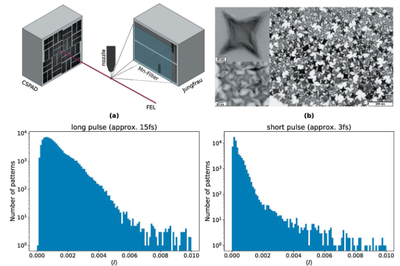the maxwell cluster occasionally plays an important role in scientific investigations, and subsequent publications. We have collected quite a list of impressive publications referencing the Maxwell Cluster, and are grateful for any additional references (we certainly have missed some). Instead of just sending the reference you could also add a blog entry on this page to highlight your publication. For the moment we just added a few abstracts as examples, a complete list can be found under Science Highlights
Leprosy, a chronic infectious disease, leads to blood mineral imbalances: low levels of zinc, calcium, magnesium, and iron and high levels of copper. Interestingly, in late medieval Europe, minerals were used to treat leprosy. We investigated physiological responses to leprosy and possible evidence of treatment in dental tissues of leprosy sufferers from medieval Denmark and early 20th century Romania when multidrug therapy was not then yet invented. Using Synchrotron Fluorescence (SXRF) and laser ablation (LA-ICP-TOFMS), we show marked covariations in the zinc, calcium, and magnesium distributions, which are compatible with clinical studies but cannot be directly attributed to leprosy. Minerals used historically as a treatment for leprosy show no detectable intake (arsenic, mercury) or a diffuse distribution (lead) related to the daily consumption of contaminated water and food. Intense lead enrichments indicate acute incorporations, potentially through the administration of lead-enriched medication or the mobilization of lead from bone stores to the bloodstream during intense physiological stress related to leprosy. However, comparisons with a healthy control group are needed to ascertain these interpretations. The positive correlations and the patterns observed between lead and essential elements may indicate underlying pathophysiological conditions, demonstrating the potential of the two techniques for investigating diseases in past populations. Brozou A, Mannino MA, Van Malderen SJM, Garrevoet J, Pubert E, Fuller BT, Dean MC, Colard T, Santos F, Lynnerup N, Boldsen JL, Jørkov ML, Soficaru AD, Vincze L, Cabec AL. |
Interactions between proteins and their solvent environment can be studied in a bottom-up approach using hydrogen-bonded chromophore-solvent clusters. The ultrafast dynamics following UV-light-induced electronic excitation of the chromophores, potential radiation damage, and their dependence on solvation are important open questions. The microsolvation effect is challenging to study due to the inherent mix of the produced gas-phase aggregates. We use the electrostatic deflector to spatially separate different molecular species in combination with pump-probe velocity-map-imaging experiments. We demonstrate that this powerful experimental approach reveals intimate details of the UV-induced dynamics in the near-UV-absorbing prototypical biomolecular indole-water system. We determine the time-dependent appearance of the different reaction products and disentangle the occurring ultrafast processes. This approach ensures that the reactants are well-known and that detailed characteristics of the specific reaction products are accessible – paving the way for the complete chemical-reactivity experiment. Onvlee, J., Trippel, S. & Küpper, J. |
With the development of X-ray free-electron lasers (XFELs), producing pulses of femtosecond durations comparable with the coherence times of X-ray fluorescence, it has become possible to observe intensity–intensity correlations due to the interference of emission from independent atoms. This has been used to compare durations of X-ray pulses and to measure the size of a focusedX-ray beam, for example. Here it is shown that it is also possible to observe the interference of fluorescence photons through the measurement of the speckle contrast of angle-resolved fluorescence patterns. Speckle contrast is often used as a measure of the degree of coherence of the incident beam or the fluctuations of the illuminated sample as determined from X-ray diffraction patterns formed by elastic scattering, rather than from fluorescence patterns as addressed here. Commonly used approaches to estimate speckle contrast were found to suffer when applied to XFEL-generated fluorescence patterns due to low photon counts and a significant variation of the excitation pulse energy from shot to shot. A new method to reliably estimate speckle contrast under such conditions, using a weighting scheme, is introduced. The method is demonstrated by comparing the speckle contrast of fluorescence observed with pulses of 3 fs to 15 fs duration. Fabian Trost, Kartik Ayyer, Dominik Oberthuer, Oleksandr Yefanov, Saša Bajt, Carl Caleman, Agnes Weimer, Artur Feld, Horst Weller, Sébastien Boutet, Jason Koglin, Nicusor Timneanu, Joachim von Zanthier, Ralf Röhlsberger and Henry N. Chapman |


